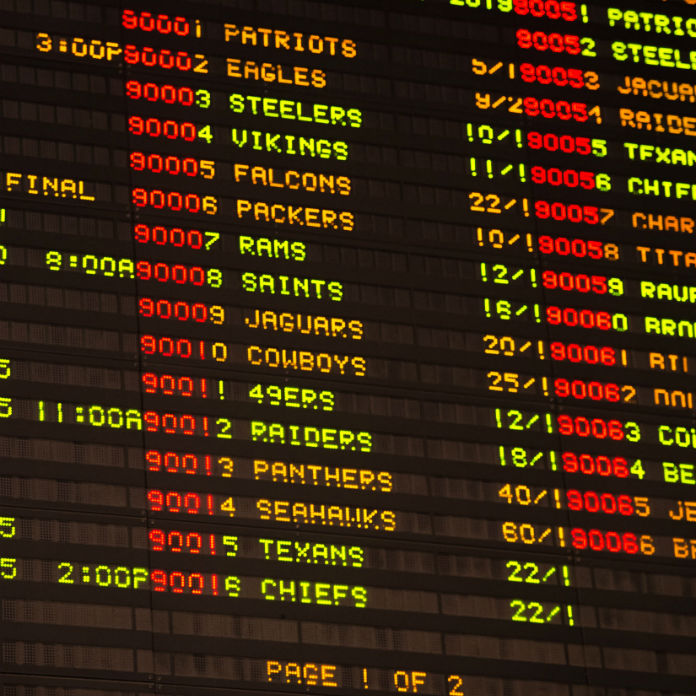- What Betting Numbers Mean
- What Do Betting Numbers Meaning
- What Do The Negative Numbers Mean In Sports Betting
- The standard (and often implied) number is –110, meaning a successful bet of $110 would net $100 profit. This is the “juice” or “vigorish” (aka “vig”) for the house or sportsbook.
- Rotation Number: A number assigned by bookmakers to every betting option on the board. Bettors use the rotation number when placing a bet, rather than team names, at betting windows at land based.
What Betting Numbers Mean
As a fan, you don’t care if your team wins by a point or 100. A win is a win, though that 100-point win would be a little easier on the nerves.
In sports betting, how much a team wins by is usually all that matters.

The most popular way to bet for the two most popular sports, basketball and football, is with the point spread, also known as the “side.” Most baseball, hockey and soccer bets are on the moneyline, which is betting on a team to win straight up with adjusted odds. Football and basketball have moneyline bets available too, but most people will take the point spread.
The concept can be a bit confusing if you’ve never dabbled in sports betting before.
The numbers game, also known as the numbers racket, the Italian lottery, or the daily number, is a form of illegal gambling or illegal lottery played mostly in poor and working class neighborhoods in the United States, wherein a bettor attempts to pick three digits to match those that will be randomly drawn the following day.
Why bet with the point spread?
The point spread was created to attract more action on a game. When the San Francisco 49ers are expected to blow out the Arizona Cardinals, it’s not enticing to lay $300 to win $100 on a moneyline. But when the 49ers are 11-point favorites and each side is -110 odds? That’s much easier.
In that example, the 49ers are spotting the Cardinals 11 points before the game starts, at least for bettors. The 49ers have to win by 12 or more points to cover the spread. If the Cardinals win or lose by 10 or less, that side wins the bet. If the game lands on 11, like a 21-10 49ers win, it’s a push and all bets are refunded. If you see a -11 that means that team is favored, and +11 means you’re taking the underdog.
Nothing sharpens your math skills better than trying to figure out how big your lead as a bettor is if you have a 22.5-point basketball underdog that is losing 90-72.
The problem with the point spread can be when a team — which really doesn’t care that you bet the favorite at -11 — has a 14-point lead but gives up a meaningless score at the end to win by only seven points. They’re still happy with the win. You, as a bettor, are not.
© Provided by Yahoo! Sports Sportsbooks have large boards that display point spreads for all games that day. (AP Photo/John Locher, File)
Point spreads lead to bad beats

The most infamous example of a bad beat with the point spread probably came in the 2004 Final Four at the NCAA men’s basketball tournament.
Duke was a 2.5-point underdog against UConn. The Huskies rallied late and took a 79-75 lead on a free throw with 3.2 seconds left. The game itself was over; Duke couldn’t score twice in a few seconds. But Duke guard Chris Duhon pulled up for a running 3-pointer just over the half-court line and banked it in at the buzzer. Duke lost 79-78, but bettors who had Duke and 2.5 points won. March Madness is a huge event for bettors, and reports at the time estimated that Duhon’s “meaningless” shot resulted in a $30 or $40 million swing in Nevada. UConn players celebrated at the final buzzer. UConn bettors doubled over in pain. That’s the difference between betting the moneyline and the point spread.
Baseball and hockey have point spreads too, the “run line” in baseball and “puck line” in hockey. It’s generally 1.5 with odds adjusting accordingly. Taking a big baseball favorite at -1.5 runs can make the odds more palatable. Of course, betting the New York Yankees at -1.5 to bring down the odds from -190 to -110 isn’t too fun when they win 4-3 and you don’t cash a bet.
Betting on the point spread is the most common way to wager on sports. And the first time you take a favorite that wins the game but doesn’t cover the spread, you’ll understand every bettor’s heartbreak.
Easily the most popular type of betting for NFL football is “spread” betting or more commonly known as betting against the spread. Bettors who are new to NFL betting or betting in general may be a little confused with NFL spread betting, but it is pretty easy to understand once it is explained to you. We will explain what betting against the spread means below.
What is Betting Against The Spread?
For each NFL game the oddsmakers set a number of points in which the favored team is favored by. Bettors can then either choose for the favored team to win by more than the number of points set, or bet on the underdogs to lose by less than the number of points they are underdogs by or win the game straight up. For example, the spread could be set on the favored team at 6.5 points. This would mean in order for a bet on the favored team on the spread to win they would need to win by more than 6.5 points (7 or more) in order to win the bet. It also means that a bet on the underdog team would win if the underdogs lost by less than 6.5 points (6 or less) or won the game outright.
Example of NFL Spread Bet
Below is an example of what NFL spread betting would look like:
Matchup
- TeamsSpread
- Dallas Cowboys -2.5
- New York Giants +2-5

What Do Betting Numbers Meaning
The negative (-) sign indicates that the Cowboys are the favorites, while the positive (+) sign indicates that the New York Giants are the underdogs. With the spread set at 2.5 points, a bet on the Cowboys would mean that they would have to win by more than 2.5 points (3 or more) in order for you to win that bet. A bet on New York would mean that the Giants would have to either lose by 2.5 or less points (2 or less) or win the game outright in order for your bet to win.
Here is another example with a screenshot taken from 5Dimes.eu during Week 3 of the 2013 NFL season:
Here you can see that the Rams are +3.5, while the Cowboys are -3.5. So for this example the Cowboys are 3.5 point favorites, while the Rams are underdogs of 3.5 points. If you were to bet on St Louis you would need them to lose by 3 or fewer points or just win the game outright. If you were to bet on Dallas you would need the Cowboys to win by 4 or more points.
If the Cowboys were to win by 3 points, lets say 30-27, any bets on the Rams +3.5 would win. Even though the Rams didn’t win the game they covered the spread of 3.5 points.
Now if the Cowboys were to win by 4 points, lets say 31-27, the Cowboys have covered the spread and anyone who wagered on Dallas would win their bets.
Other NFL Spread Betting Information
You may often notice that the spread is sometimes set at an even number such as 3, 6 , 10, etc. In this case if the favored team won by the exact amount set for the spread the bet would be pushed, and all bets would be returned. For example, if the Patriots were 3 point favorites and they won by a FG (3 points) than this would results in a push, meaning no matter which side you bet on you would get your money returned to you.
The most common NFL spreads are usually set between about 2.5-10.5 points, but you will also almost always have games each week with spreads lower than 2.5 and higher than 10.5. In the event that the oddsmakers feel the game doesn’t need a spread, it would be set at 0 or what some call a pick’em (both teams are given even odds to win for this type of bet).
The odds given on the spread are usually -110 unless otherwise noted. It is not uncommon to see one side of the spread being -105, with the other side being -115. If you don’t see any odds listed for each side of NFL spreads you are supposed to assume the odds are -110 on each. Not sure how to read NFL betting odds? Check out our Sports Betting Odds guide.
What Do The Negative Numbers Mean In Sports Betting
Now that you know the basics of NFL spread betting you’ll want to check out our Sports Betting Strategy guide which has some great NFL strategy articles written by a professional bettor.